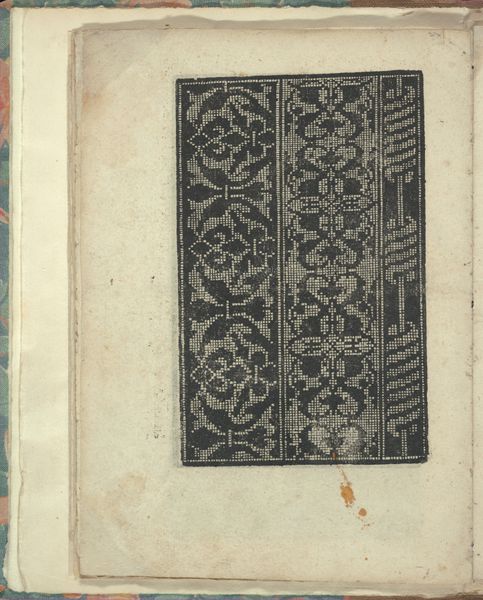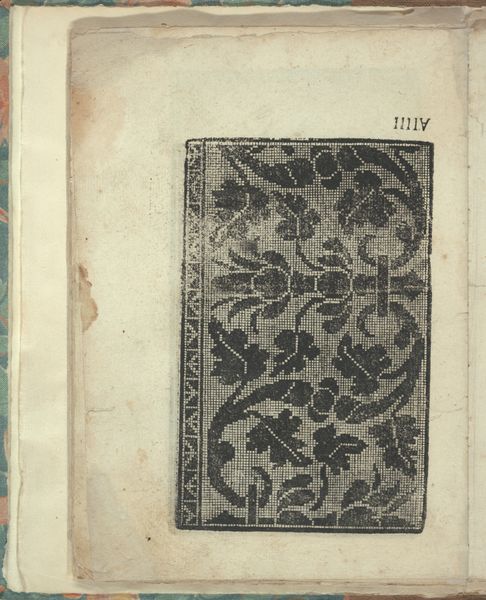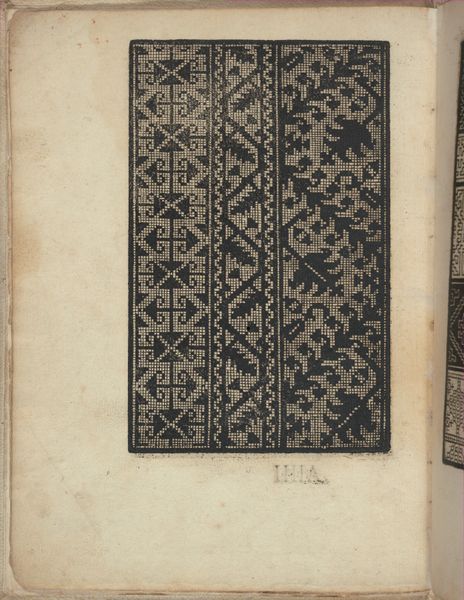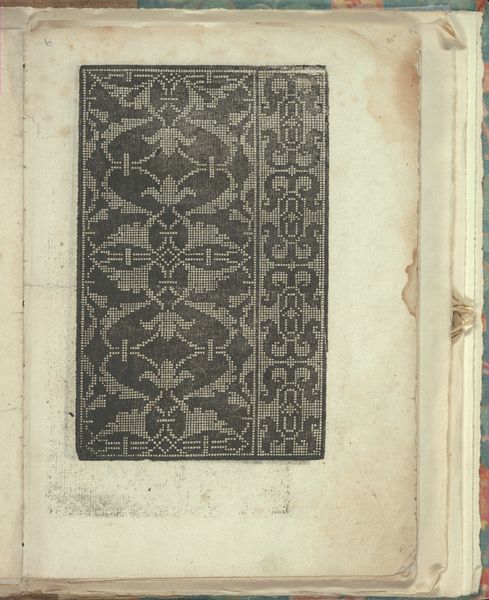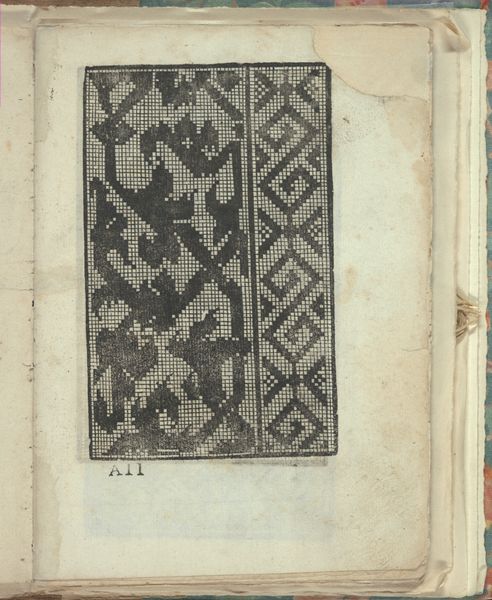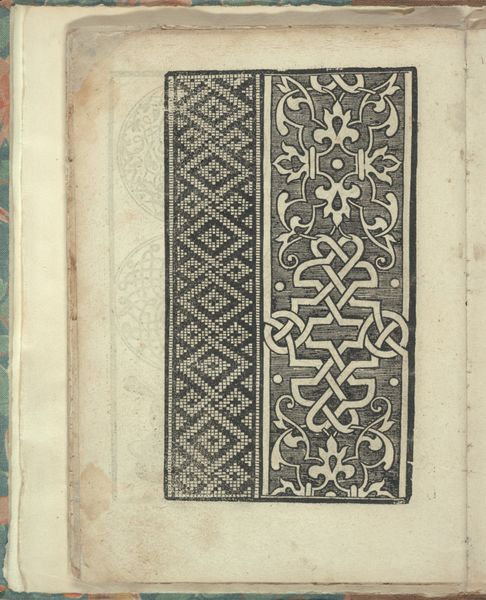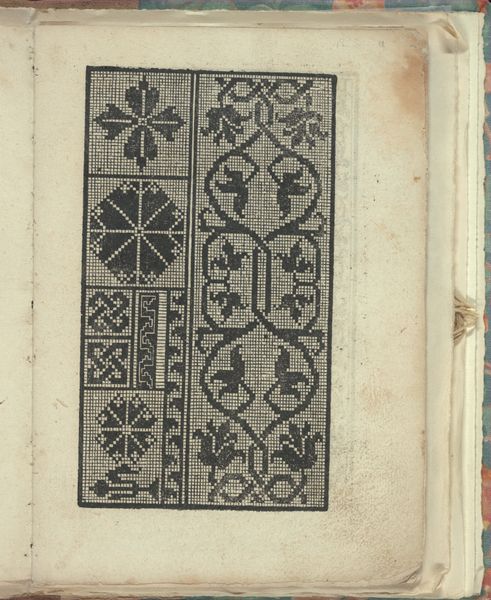
Opera Nova Universali intitulata Corona di racammi, page 24 (recto) 1530
0:00
0:00
drawing, print, paper, engraving
#
drawing
# print
#
paper
#
11_renaissance
#
geometric
#
history-painting
#
engraving
Dimensions: Overall: 8 7/8 x 6 7/8 in. (22.5 x 17.5 cm)
Copyright: Public Domain
Curator: What immediately strikes me is the intricate geometric patterning, almost mesmerizing. It's incredibly dense, and gives a rather archaic sensibility. Editor: Indeed. This engraving is a page from "Opera Nova Universali intitulata Corona di racammi," created around 1530 by Giovanni Andrea Vavassore. Curator: Vavassore, right, a pivotal figure in the popularization of pattern books for needlework. Editor: Precisely. We are looking at one page showcasing designs, most likely intended as templates for embroidery. Consider the labor embedded here—the original drawing, the engraving process for mass production, and finally the countless hours of stitching by those who would then employ the pattern. Curator: I can certainly trace a lineage of aesthetic ideas from classical precedent: vegetal forms contrast with strict geometric schemes—that linearity versus organic development produces a rich and balanced image. The negative space is minimal and there are strong diagonal lines at work. Editor: Right. The very notion of reproducibility—moving these designs across various social strata—is fascinating. Embroidery was a significant part of domestic labor. The rising merchant classes increasingly saw stitched objects not just for use but display of prosperity. Curator: Agreed. The image oscillates between a blueprint for labor and something more aesthetically complete and satisfying as a design in itself. The scale becomes indeterminate: Is it meant as a suggestion or to display its compositional mastery? Editor: Considering it exists on paper as an engraved design to guide embroidery in textile, this image asks questions about our notions of artistic hierarchy and value of production. Curator: It's a reminder that aesthetics are intrinsically tied to practical processes, social contexts, and hierarchies of production, and it challenges preconceived notions of fine art versus functional design. Editor: For me it reconfigures established frameworks in art history, as a testament to labor, dissemination and appropriation.
Comments
No comments
Be the first to comment and join the conversation on the ultimate creative platform.


